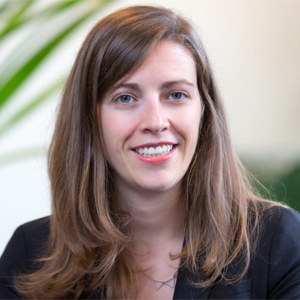Implications of Generative AI (ChatGPT) in Education

By Chloe Wojtanik, Hariri Institute for Computing
Over the past year, ChatGPT has become a topic of hot debate, especially in the classroom due to student’s using the software’s work as their own. Whether you support the use of generative artificial intelligence (AI) or not, it’s important to have discussions about both the capabilities as well as the possible harms of this technology because sooner rather than later, it’s destined to become part of the world’s daily life.
On October 6, 2023, the Hariri Institute held a workshop entitled “The Implications of Generative AI (ChatGPT) in Education,” which was led by Naomi Caselli, Director of the AI and Education Initiative and Assistant Professor of Deaf Education at Wheelock. Speakers included Ashley Moore, an Assistant Professor at Wheelock, and Rebecca Shangraw, a Senior Lecturer at Wheelock, both faculty affiliates of the AI and Education Initiative. They each provided comments addressing the future of AI in education and use of AI within BU.

“The field of AI has been growing rapidly for a long period of time,” Caselli said in an interview when asked about why she’s turning her focus AI now, “But with the release of some of these technologies that have caught the public eye like ChatGPT, I think it’s now becoming clear to the general public what AI is going to do for the world.”
The workshop began with a presentation from Caselli about the way AI is being used today in both the classroom and the outside world. An example she demonstrated was how AI can be used to close the language barrier. She shared a video of herself where she prefaced that the only spoken language she speaks fluently is English but then she proceeded to speak a paragraph in fluent Spanish and Turkish by using an AI system that takes a video of you speaking a language and then translates it into another language while still using your voice and image.
“So as we think about what AI can do,” Caselli said. “This translation capability is going to affect how schools work with multilingual speakers, students who are just beginning to learn English, or connecting with parents and families who may speak another language. The ways wecross language barriers will be very different in the coming years.”
Moore, a critical applied linguist, began talking about the racial harms of using AI. He focused on DALL-E, an AI system that creates realistic looking images from a description in natural language. He typed in the prompt “pop-art style of a Japanese woman alone in a crowd” and along came photos of Japanese women in kimonos. While some Japanese women certainly still wear kimonos, it’s not a common practice anymore, so AI produced a racially stereotypical image.
After presenting current uses of AI, roundtable discussions were held with faculty researchers from diverse disciplines spanning bioinformatics, communications, computer science, computing, data science, digital learning, education, engineering, global health, philosophy, and policy.
Workshop attendees shared their experiences of students using generative AI for idea generation, writing essays, and answering problem sets that were assigned for homework. Faculty agreed that using AI for idea generation has its benefits but students run into problems when they copy the AI’s ideas completely and don’t add their own analysis with it.
Attendees also wondered about the careers we prepare students for. Jobs like journalists and coders will be very different with the availability of tools like ChatGPT, whichcan write news stories or code.
Providing education and training in emerging areas, enabling students to leverage and benefit from the rise of AI, was identified as a key priority for the future to minimize job placement.
“AI is rapidly changing the face of education, and we can either passively let those changes happen or proactively plan for the future,” says Caselli. “Through workshops and conversations like this, our goal is to build a community where we take an active hand in shaping the future of education and AI.”
For more information about the Hariri Insitute’s AI and Education Initiative, visit https://www.bu.edu/hic/centers-initiatives-labs/ai-and-education-initiative/.
Story Coverage